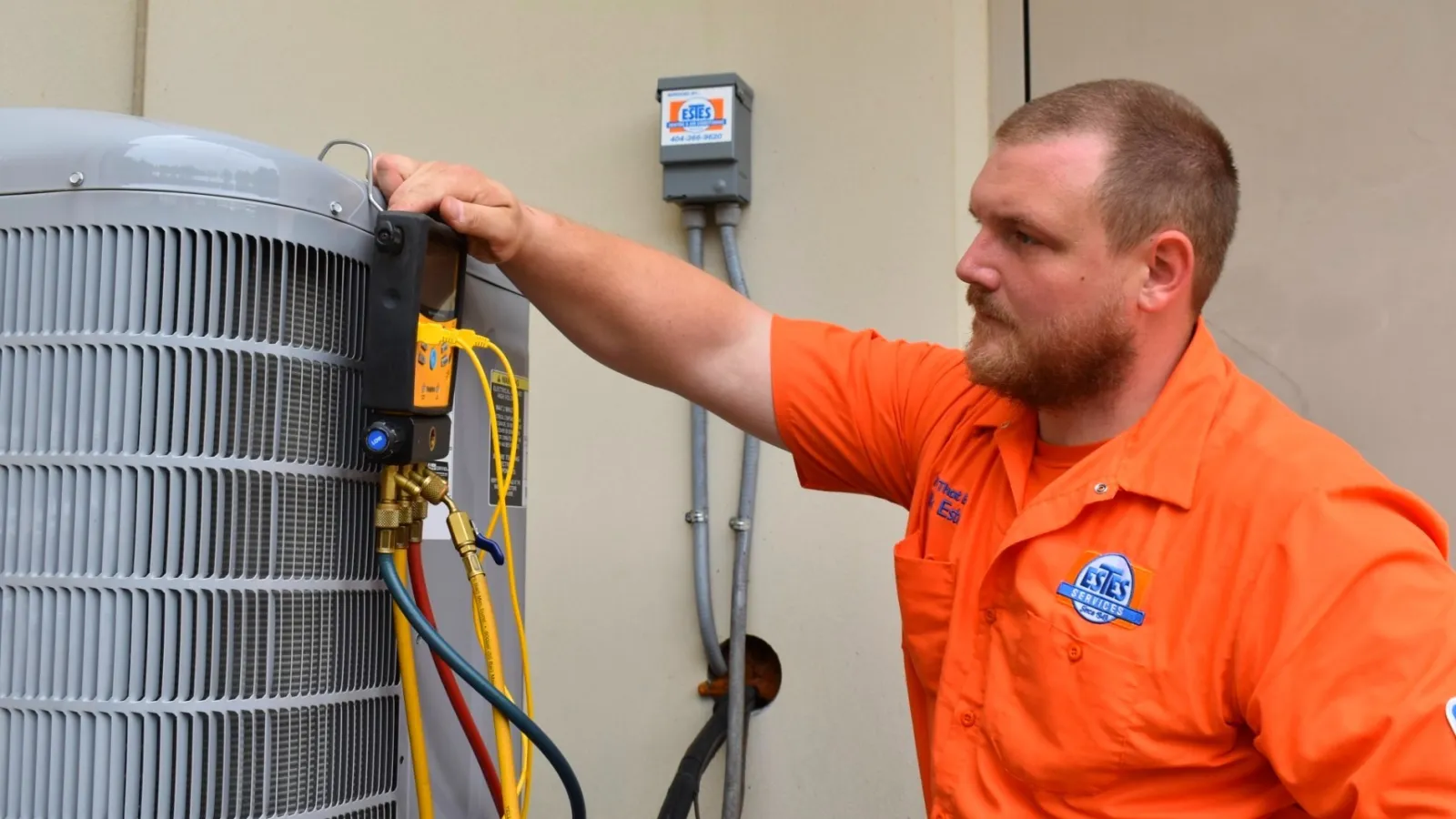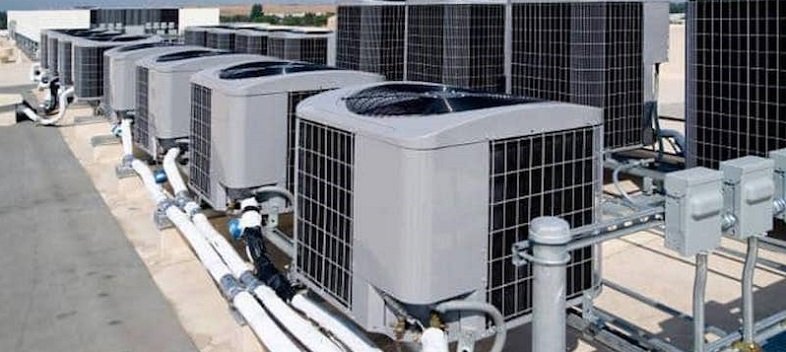How a Heatpump and Furnace Interact to Maximize Your Home's Heating Performance
Understanding how a heatpump and heating system collaborate is crucial for property owners looking for reliable home heating remedies. Each system has its staminas, supplying a balanced strategy to home convenience. The warmth pump excels in moderate temperature levels, while the heating system supplies rapid warmth throughout severe cold. This synergy not only reduces power expenses but additionally enhances the life expectancy of both devices. What factors influence this collaboration, and just how can home owners maximize their benefits?
Understanding Heat Pumps: Exactly How They Function
Although lots of people may be unknown with their internal operations, warm pumps play a vital role in contemporary home heating systems. These devices operate by transferring warmth from one area to one more, making use of the principles of thermodynamics. In colder months, a warmth pump removes warmth from the outdoors air, ground, or water, and transfers it inside to warm the space. Alternatively, throughout warmer months, it can turn around the process, working as an air conditioning system by eliminating warmth from inside to the outside.Heat pumps contain an evaporator, development, condenser, and compressor shutoff. The refrigerant within the system takes in heat as it vaporizes at low temperature levels and pressures. The compressor then raises the stress and temperature level of the refrigerant, permitting it to launch warmth as it condenses. This effective process can considerably reduce energy consumption contrasted to typical home heating methods, making heatpump a sustainable selection for environment control in homes.
The Role of Furnaces in Home Heating
Heaters play a necessary role in home heating by providing a reputable source of heat during the colder months. They operate by producing warm through combustion or electric resistance, distributing it throughout the home via air ducts or radiant systems. The efficiency of a heating system is typically gauged by its Yearly Gas Usage Efficiency (AFUE) score, which shows just how effectively the device transforms fuel into heat.Furnaces can utilize numerous power sources, consisting of all-natural gas, power, propane, or oil, permitting property owners to select the most ideal alternative for their needs. Unlike warmth pumps, which might struggle in extreme chilly, furnaces preserve constant performance, guaranteeing that indoor temperature levels stay comfortable no matter of outside conditions. Furthermore, contemporary furnaces often come outfitted with sophisticated modern technology, such as clever thermostats and variable-speed blowers, improving their efficiency and responsiveness. This adaptability makes heating systems a crucial component in all-inclusive home heating techniques.

Benefits of Using Both Equipments With Each Other
Combining the strengths of both heating systems and heatpump can result in a more effective and efficient home heating remedy. Using both systems allows home owners to take advantage of the heatpump's energy effectiveness during milder temperatures while depending on the heating system for even more extreme cold problems. This dual approach can substantially lower energy prices, as heatpump consume less electrical power than standard heating approaches when temperature levels are moderate.Additionally, utilizing both systems together can enhance convenience levels in the home. Heat pumps can give regular, also home heating, while heating systems can swiftly elevate ambient temperatures when needed. The combination of both systems can expand the life expectancy of tools by decreasing wear and tear on each device, as they share the work. Eventually, home owners can delight in a well balanced, cost-effective heating remedy that readjusts seamlessly to differing weather, ensuring a warm and welcoming home throughout the cold weather.
Just How Heat Pumps and Furnaces Complement Each Other
They produce a corresponding home heating system that makes best use of efficiency and comfort when property owners integrate warm pumps and heating systems. Warm pumps run by moving warm from the outdoors air or ground, making them extremely effective in moderate climates. They succeed during milder temperature levels, providing cost-effective heating. Conversely, heating systems produce warm with burning or electrical resistance, providing solid, prompt heat during extreme chilly conditions.The combination of these two systems permits vibrant changes based on temperature fluctuations. Throughout warmer months or milder winter months days, the heatpump can take the lead, saving energy and decreasing costs. As temperature levels drop, the heating system can seamlessly involve, making sure regular heat throughout the home. This synergy not only optimizes power usage but also boosts the life expectancy of both systems, as each system operates within its ideal efficiency variety. Together, they develop a balanced environment that adjusts to varying climate needs.
Optimizing Efficiency: Tips for Homeowners
Property owners can enhance their home heating effectiveness through numerous functional strategies. Developing a routine maintenance schedule, incorporating smart thermostat modern technology, and carrying out effective insulation and securing services are vital steps. These actions not only improve convenience but also minimize energy expenses.
Regular Upkeep Schedule
To ensure maximum home heating efficiency, developing a regular maintenance schedule is crucial for any type of home. Property owners need to focus on routine inspections of both heat pumps and heating systems to ascertain peak efficiency. This consists of changing air filters each to 3 months, as blocked filters can greatly lower efficiency. Furthermore, scheduling expert upkeep at the very least when a year enables technicians to determine and resolve possible problems prior to they rise. Property owners must additionally clean the heat pump's outside system to avoid particles buildup that can hinder air flow. By adhering to a routine upkeep routine, house owners not just boost their heater' efficiency but also extend their lifespan, resulting in higher convenience and lowered energy costs throughout the colder months.
Smart Thermostat Integration
Integrating a smart thermostat right into a home heater can substantially improve energy efficiency, specifically as it permits exact control over temperature settings. These tools can discover the house owner's schedule and choices, immediately changing the temperature level to maximize convenience while lessening energy use. For circumstances, they can reduce heating throughout times when the home is vacant, decreasing unnecessary intake. Several clever thermostats additionally offer real-time power use data, allowing home owners to make enlightened choices about their heating behaviors. Furthermore, remote accessibility through smart device apps permits individuals to change settings from anywhere, making sure the home is cozy upon return. Overall, smart thermostat combination not only enhances comfort yet considerably adds to power financial savings and effectiveness.
Insulation and Securing Solutions
Smart thermostats play a critical role in energy performance, but straight from the source their efficiency can be greatly boosted by proper insulation and sealing options. Home owners ought to focus on shielding walls, floorings, and attic rooms to reduce warm loss. Top quality insulation products, such as spray foam or fiberglass, can significantly boost thermal resistance. Additionally, sealing spaces around home windows, doors, and air ducts avoids cool air infiltration and heat escape. Weatherstripping and caulking are effective techniques for resolving these leakages - furnace replacement. Routine assessments for air leakages, together with the use of blower door tests, can help identify problem locations. By purchasing insulation and securing, house owners can enhance the efficiency of their heater, eventually causing reduced energy intake and reduced utility costs
Usual Myths Concerning Heat Pumps and Furnaces
What misunderstandings surround heatpump and heating systems? Lots of people incorrectly think that heatpump are inefficient in chillier environments. In truth, modern-day heatpump are developed to run effectively even in reduced temperature levels, giving dependable heating throughout winter season. One more common misconception is that heating systems are always extra reliable than warm pumps. However, this depends upon the particular power sources and performance scores of the units concerned. Some may additionally believe that utilizing both systems simultaneously is unnecessary, however actually, this combination can enhance heating performance, particularly throughout severe climate condition. Additionally, individuals usually presume that heatpump require continuous upkeep, when actually, they have comparable upkeep needs to standard heating unit. By exposing these misconceptions, home owners can make more educated choices concerning their heating choices, inevitably leading to enhanced convenience and power efficiency in their homes.
Maintenance Considerations for Combined Solutions

Regularly Asked Questions
Can Warm Pumps Job Effectively in Very Cold Climates?
Warmth pumps can struggle in incredibly cool environments due to decreased performance and warmth extraction restrictions. Developments in innovation have led to designs made for better performance in such conditions, improving their stability in harsh environments.
For How Long Do Warm Pumps and Furnaces Typically Last?
Heatpump typically last 15 to 20 years, while heating systems have a life expectancy of 15 to three decades. Regular upkeep can extend their longevity, making visit the site sure reliable operation and reducing the demand for early substitutes.

What Is the Ordinary Price of Setting Up Both Equipments?
The average expense of mounting both a heat pump and a heater generally ranges between $5,000 to $10,000 - heat pump service. Aspects affecting this price consist of system dimension, installation intricacy, and regional labor prices
Exist Tax Incentives for Making Use Of Energy-Efficient Home Heating Systems?
Lots of house owners ask about tax obligation incentives for energy-efficient heating unit. Different government and state programs frequently supply refunds or credit histories, urging the fostering of sustainable modern technologies to lower energy intake and promote ecological responsibility.
Just how Do I Pick the Right Dimension Heat Pump and Heating System?
Choosing the ideal dimension heatpump and heater entails computing the home's square footage, considering insulation top quality, and evaluating local climate. Consulting a professional can assure ideal system efficiency and energy effectiveness based on specific requirements. furnace replacement. Understanding exactly how a warm pump and furnace work together is essential for homeowners seeking efficient heating options. In cooler months, a warm pump extracts warm from the outside air, ground, or water, and transfers it indoors to Check This Out heat the living room. When property owners incorporate warmth pumps and heaters, they develop a corresponding home heating system that optimizes performance and comfort. Warm pumps run by transferring warmth from the outside air or ground, making them very reliable in moderate climates. Warm pumps can struggle in very cold climates due to minimized performance and heat removal restrictions